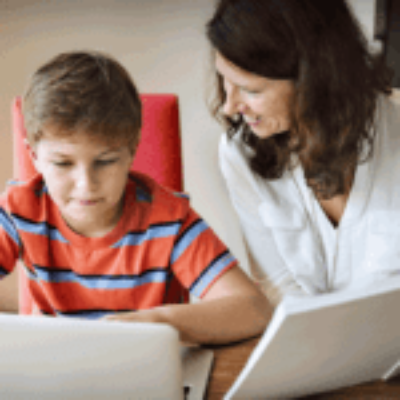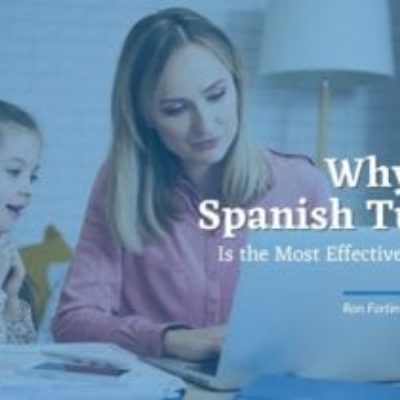
The Parent’s Ultimate Guide to Start Homeschooling Today
“Education in the true sense is helping the individual to be mature and free, to flower greatly in love and goodness. That is what we should be interested in, and not in shaping the child according to some idealist pattern.”
– J. Krishnamurti
It is time for a new model of more personalized, meaningful education. The old system is crumbling, and this period of unexpected homeschooling is the perfect opportunity to start fresh. We need to reconnect to our enthusiasm and passions as our impetus for learning. We need to collaborate, innovate, and give up constantly competing.
You know your child and how they learn better than anyone. As a homeschooling parent you will be able to cater to their personal learning style, whether visual, audial, or kinesthetic (hands-on). Keeping your child’s learning style and daily energy flow in mind can help you plan a creative curriculum that suits them best.
The Importance of Deschooling
Children are resilient, creative beings who are always learning naturally, every day.
If your child has attended a traditional school, they will need a period of deschooling; in other words, give them at least a month of “unlearning” that serves as a transition from the traditional methods of learning to a more relaxed homeschooling style. During this time, you and your child can let go of old school habits and break in your new routine and lifestyle.
To effectively deschool, don’t implement any “formal” educational practices, such as standard lessons, worksheets, quizzes, or “homework.” Here is a list of potential activities for deschooling:
- Go to the library (or use your local library’s online resources) and read
- Visit older relatives (or schedule a video call) and listen to their stories about your family history
- Go on nature hikes
- Visit museums (online tours)
- Do kindness activities
- Play outside
- Grow a garden
- Have fun with arts and crafts projects
- Participate in (and watch) community theatre and improv
- Join a book club
- Join a writing group
- Start up a garage band
- Make home movies
- Start a blog
- Play chess, checkers, and other strategic games
- Take kids yoga classes
- Develop and maintain an exercise routine
- Learn to cook
- Learn to sew, knit, crochet, quilt, etc.
- Volunteer
Basically, anything goes during deschooling. Feel free to add to the list with your own deschooling ideas!
Ease Your Way In
An ideal way to ease into homeschooling is by doing a few unit studies on different topics that interest your child(ren).

Brainstorm a list with your child of things they would like to learn more about. Build learning units around that. The topics could be anything from ladybugs to Egyptian culture to volcanoes to anime. The sky’s the limit! To research their topic, they can read books, listen to podcasts, visit websites, watch educational documentaries. Once they have collected the information, they can create a booklet, PowerPoint presentation, or poster to showcase what they learned.
As time goes on, you may want to choose a more structured curriculum to follow, or you just may decide to continue with the unit method or unschooling! Trust your intuition and know that it’s totally fine to switch things up from time to time.
Create a Simple Homeschool Schedule or Routine
Some folks are schedule-driven people; others are routine-based but not as attached to the clock. If you are a schedule person, by all means, create a schedule. Having lived in Guatemala for over 10 years, I am no longer a scheduler but place more emphasis on habits and routines. In any case, this simple homeschool routine is a good one to follow or revise to fit your family’s needs.
Morning Read-Alouds
The absolute most important thing you can do in your homeschool is read aloud. That’s why it’s ideal to read aloud first thing in the morning. You can cover any academic subject during your read-aloud time. There’s a book for everything.
The key is to choose books that are interesting and strike a balance between the child reading on his or her own and the parent reading to the child. In the latter case, the book can and should be more quite a bit advanced than the student’s reading level. For example, I’m reading the Harry Potter series to my 7-year-old daughter; whereas she is reading 1st and 2nd grade leveled readers in Spanish and English.
Make Math Fun
Almost every game involves some level of math. Playing games with your children, or gameschooling, is a fun and easy way to learn math.
Cooking and baking together is another great way to incorporate math (measurement) into your day. In fact, making just one recipe involves aspects of literacy, math, science, and history! And you are creating a yummy meal to eat at the same time.
Spend Time Outside
Spend some time each day in the backyard or out on your local nature trails. Spending time in nature has been shown to improve our well-being. Slow your pace and enjoy being present with your child(ren). Encourage them to discover the abundant wonder all around. Some ideas for learning in the garden or park include collecting leaves and flowers, cataloging bugs and plants by sketching or painting them, and writing stories or poems based upon the natural world and your surroundings.
Mealtime Learning
You can fit in loads of learning during breakfast, lunch, or dinner with the help of technology and old fashioned conversation. Stream a podcast or play a favorite audiobook while preparing a meal with your child, if he or she is old enough to help out in the kitchen.
So much learning happens through the conversations we have with our children. Converse with each other over a meal. Talk about your day, your plans, goals, wishes, hopes, what you learned, things you love, things you dislike. Discuss current events or the books you’re currently reading, or that movie you just watched. Talk, share, and reflect.
Learn Spanish
Want to establish and/or build your child’s Spanish fluency during this unexpected break from traditional school?
Bilingual individuals enjoy a variety of benefits. Bilinguals have quicker, stronger mental power that helps them navigate subjects beyond Spanish. Increased mental ability helps with just about everything in life, from traditional subjects like science and math to overall creative thinking and emotional intelligence. Students who push themselves to learn develop mental muscles that make them feel capable, strong, and secure in their abilities. And, of course, any child who becomes fully bilingual now will have many more work opportunities open up for them once they are adults.
Resources By Academic Subject
Thanks to the internet, homeschooling is more accessible and economical than ever before. Many curricula are available online for free, both comprehensive and subject-specific. Some provide a list of materials you will need to buy as well as downloadable material. Here are a few to explore:
General/All Subjects
Language Arts
- Spelling City
- Vocabulary games
- Grim, Grimmer, Grimmest
- Storynory
- Stories Podcast
- The Daily Poem
- Barefoot Books
- More Language Arts resources
Math
- Math Homeschool Resources
- Bicycle Cards
- Gameschool Basics
- Logic games
- Bedtime Math
- Let’s Play Math
- Math Geek Mama
- Prodigy
Science
- Brains On!
- But Why?
- Tumble Science
- 60-Second Science
- WOW in the World
- Strange Animals Podcast
- Bird Notes
- Free Homeschool Science Resources
News & History
Spanish
- Podcasts for Beginners
- Spanish Academy TV
- Spanish Learning Apps
- 25 Essential Spanish Phrases for Beginners
- Learn Spanish for Free! 45+ Free Resources Proven to Promote Fluency
Time to Get Started!
I hope this post has been helpful and inspiring. It’s time to create your homeschool routine. Draft a schedule or routine based on the tips and tools provided here, and jump right in.
For over 10 years, Homeschool Spanish Academy has provided remote learners with access to immersive Spanish classes. Our unique curriculum and teaching style is tailored to the needs of students of all ages and levels, from preschool to postgraduate. Book a free trial class for your kids as a fun, effective way to include Spanish in your new homeschool routine.
Want more homeschooling resources? Check these out!
- 100 Easy Spanish Words for True Beginners
- Language Learning with Netflix: How to Use the Chrome Extension
- Earth Day Projects for Kids + Spanish Earth Day Vocabulary
- Turn Your Life Around: From Passive Bilingualism to Fluency!
- 23 Common Spanish Prepositions You Can Use Today
- 25 Common Subjunctive Phrases in Spanish Conversation
- 10 Homeschooling Styles You Need to Explore in 2023
- What Is an Infinitive in Spanish?
- 10 Innovative Contemporary Latin American Artists Who Broke the Mold - February 16, 2023
- The Sweetest Guide to Valentine’s Day Vocabulary in Spanish - February 14, 2023
- 10 Famous Afro-Latinas Who’ve Made a Powerful Impact - February 9, 2023




